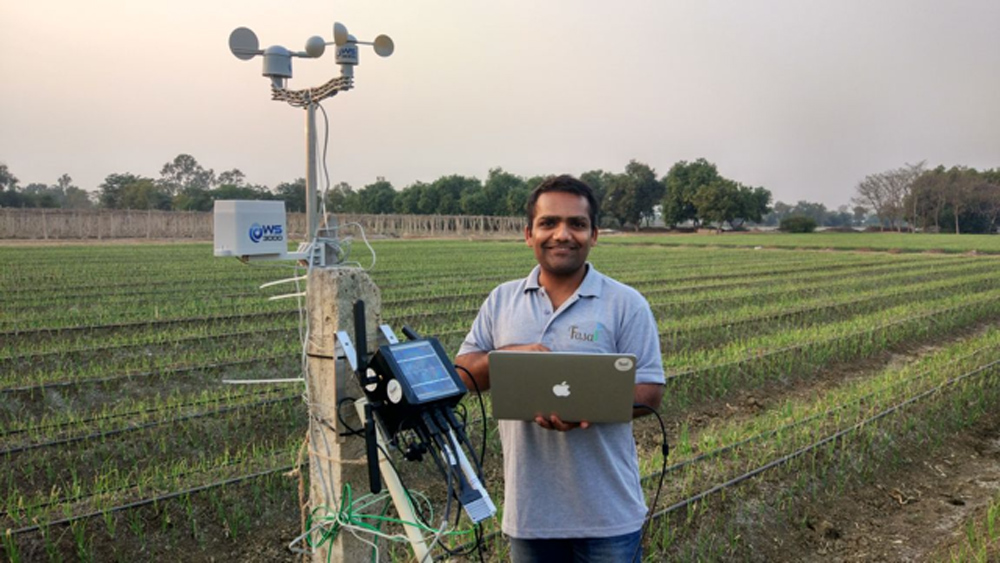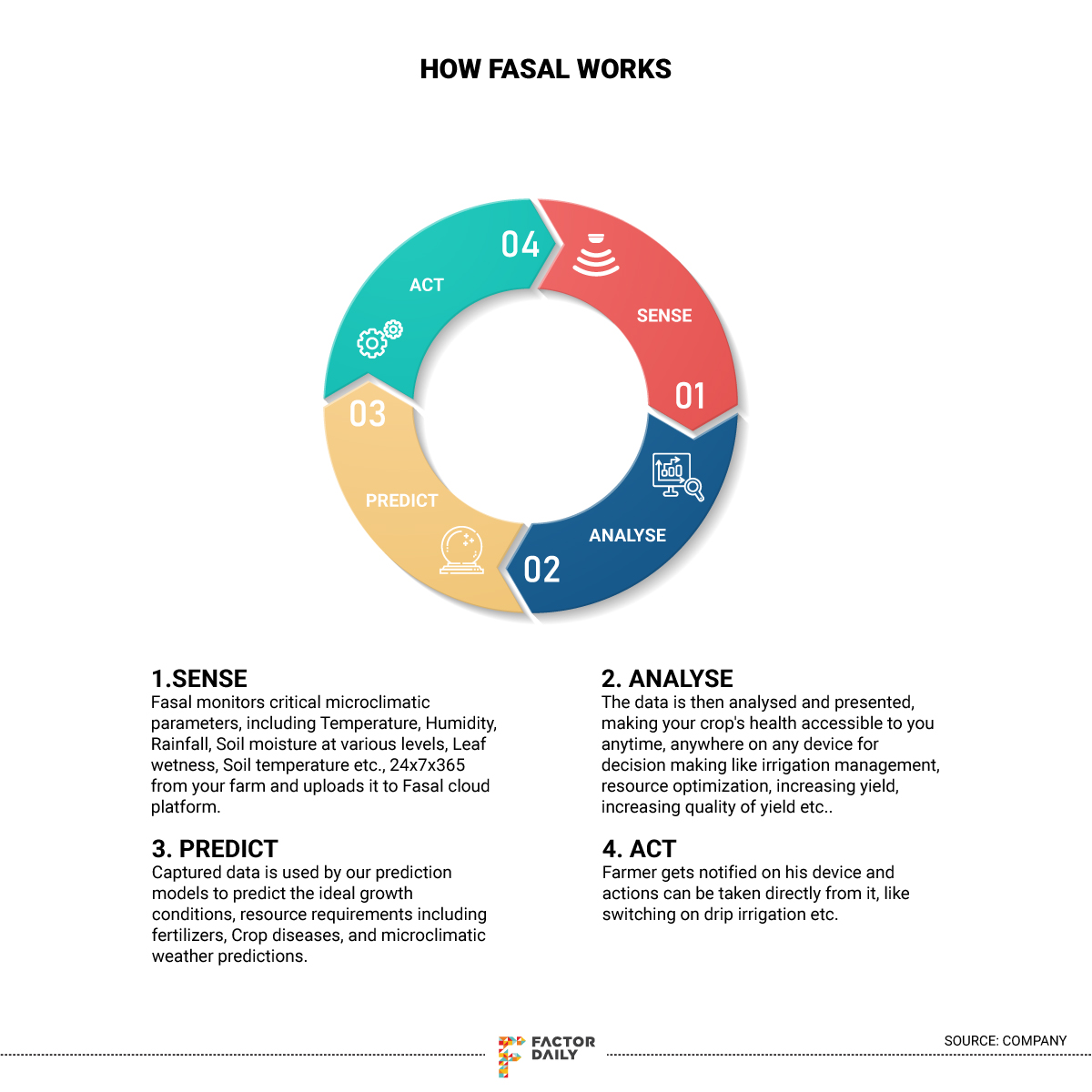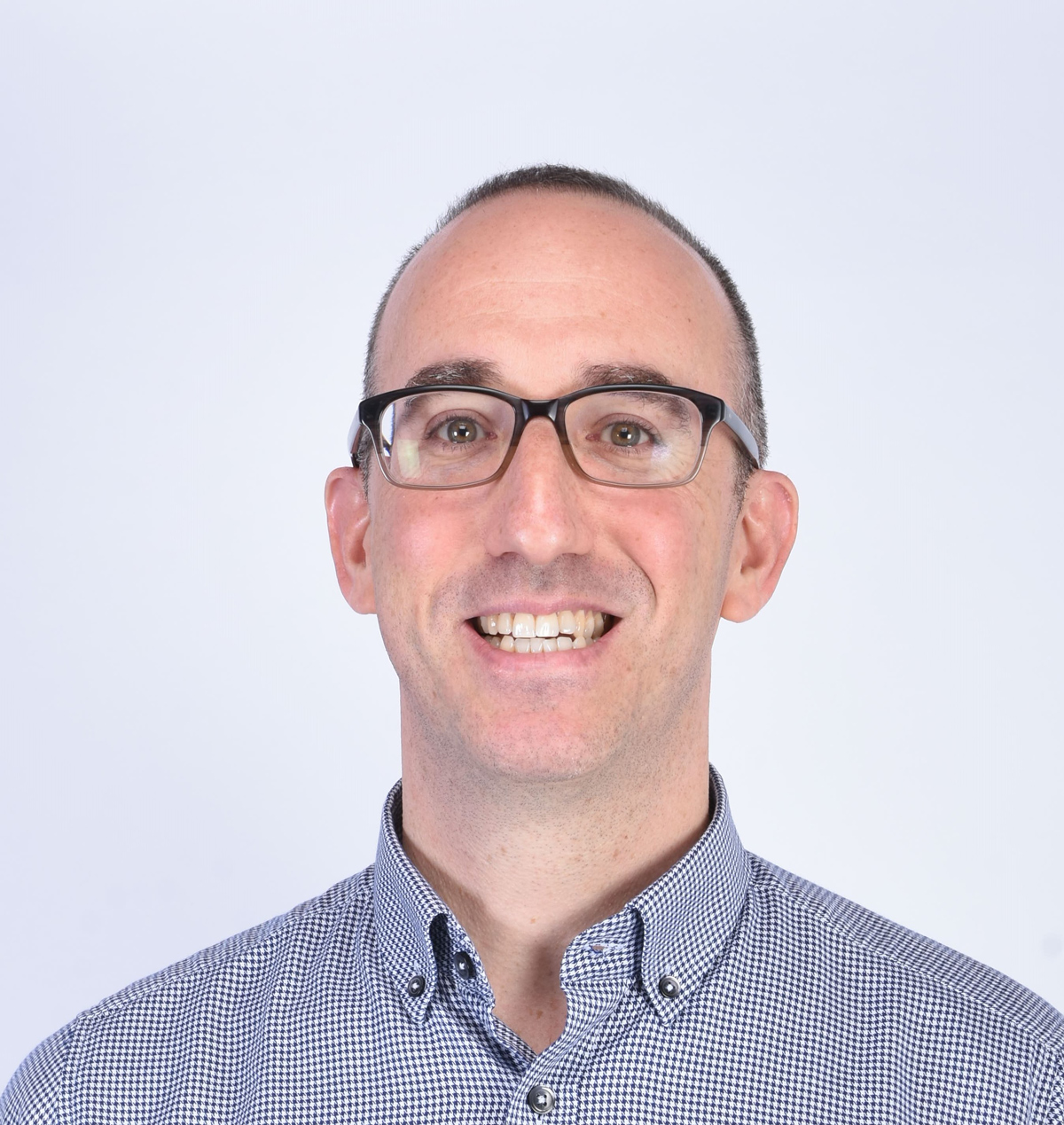
Two out of three Indians count on agriculture as their primary livelihood yet the sector contributes just one-sixth of the country’s national income. For long, policy mandarins and economists have bemoaned this skew and the urgent need to boost farm productivity but little has moved the needle in Indian farming in recent decades except in pockets.
Like in every other sector, artificial intelligence and machine learning techniques, combined with on the ground automated sensing using internet of things devices, is being deployed in agriculture, too.
The start-ups are paving the way for tech to to help the Indian farmer to tackle one the biggest challenges before farming: uncertainty.
“Uncertainty is the poison in the blood of Indian farming. Farming is difficult and stressful, driving farmers out of farming and sometimes even to suicide. Technology companies in the agri-tech space are helping to make farming into a more stable and desirable industry,” says Mark Kahn, co-founder at venture fund Omnivore.
Much of the action is in the post-harvest stage. For example: Bengaluru-based Fasal, which predicts weather conditions to the last metre, according to co-founder and CEO Ananda Verma. The product that does this is Fasal microclimate.
Verma, who cofounded Fasal with Shailendra Tiwari, began working on a project to help his father, a seed farmer at Azamgarh, tackle some issues at his farm. This project grew into what today is Fasal.
Farmers rely a lot on weather forecasts be it rain, temperature, humidity etc., points out Verma. But, the problem with the current scenario – based on forecasts by the government’s Indian Meteorological Department (IMD) and private agencies such as Skymet, Accuweather and others – is that the farmer usually sees on the internet comes from a weather station that sits far away and may not be accurate enough for them.

“We have built a solution based on their (other data sources) forecast and our data, then optimised it for the hyperlocal forecast at the specific location. With this data, that is fed into our microclimate engine’s model and we are able to fine-tune the forecast to a specific location,” says Verma.
One of the primary sources for the weather forecast in India is IMD with around 2000 weather stations across India, which is not much considering the vast expanse of India’s hinterlands. Private weather intelligence company Skymet has a larger coverage with over 3500 weather stations across India.
But these sources might not be able to give the precise weather forecast that an Indian farmer needs.
Verma takes the example of Bengaluru where even if we get a common forecast for the city, in many instances, it has been raining in HSR Layout and not in the adjacent area of Koramangala.
Fasal’s microclimate system is trying to help farmers solve this problem with IoT sensors – short for ‘internet of things’ computing devices – at farms that monitor and stream data 24/7 to the company’s cloud servers. At the servers, sensor data along with forecast data from various external sources from IMD, Skymet etc. are fed into a machine learning model to fine-tune and predict the weather at a granular level. The farmer can access this through a mobile app.
“What we do is collect the forecast data from external sources, which might be for the nearest town or the region where the farm is located, and take the data from our IoT system located on premise at the farm and check for the error margin in the prediction,” adds Verma.
Over a period of time, Fasal’s microclimate model is trained with this data to help optimise the error so that the predictions for the farm are accurate. The system currently has an accuracy of +/- one to two degree Celsius, says Verma.
Verma clarifies that Fasal has not built a forecast engine, because that is very complex and probably requires over 20 to 30 years of data but what his system does is something different. “We take data from all these sources in real time and our algorithm optimises the error to give an accurate forecast for the particular farm,” he adds.
Fasal has developed two more solutions for the Indian farmer, one for providing real-time data to manage irrigation and the other for disease and pest management.
The irrigation management solution revolves around data models that help farmers plan out irrigation timings and intervals.
“Once the system is installed, all the real-time data can be accessed via the app, especially in terms of soil moisture, electrical conductivity and pH. These data points are used to help them make decisions in terms of when to irrigate and how much to irrigate the farms,” says Verma, adding that the crop yield rose up to 20% when the farmers began adjusting to the suggested right irrigation patterns. (pH is the scale used to measure how acidic or basic a substance is.)
Fasal currently has around 30 customers both in the B2B and B2C segment.
“We are very crop focused. We don’t work with every possible crop. For instance, we don’t work with wheat, rice or sugarcane but we work with horticulture farmers who grow crops like onion, tomato, capsicum, chilli. We also work with vineyards, grape and pomegranate farmers,” says Verma.

Grover Zampa Vineyards, the second-largest winemaker in India, is one of Fasal’s B2B customers today.
“When it comes to wine grapes, Brix and berry size are two important factors that decide the quality of the resultant wine. Brix is a measure to help determine the potential alcohol content of the wine from the grape and managing the berry size is important in order to control the skin-to-juice ratio which affects the complexity of the wine,” says Verma.
Wine grapes are usually grown under mild water stress. Water stress is the physiological stress that plants experience due to the lack of available moisture. Along with this managing parameter like temperature, humidity, soil moisture, and soil temperature are critical in order to get the best results during the winemaking process, adds Verma. Fasal’s solutions help vineyards monitor and manage water stress level at the primary and the secondary root zone and controlling the berry size and Brix of the grape.
Fasal’s pest and disease management solutions work on the logic that most crop-related disease and pests are triggered by weather conditions. Last year, after the irregular monsoon, farmers across more than half a dozen Indian states had to deal with pest attacks. In one instance, Brown plant hopper infestation destroyed over 180,000 hectares of rice plantations across 15 districts in Odisha.
“Currently we have models for around seven crops that work very accurately, these models once applied on a farm, keep monitoring the data and the algorithms are able to predict that you are going to have a particular disease. So instead of reacting to the disease, we help the farmers take preventive measures,” says Verma giving the example of how farmers could be alerted on chances of rain on a farm that is scheduled to be sprayed with pesticides as the rain could wash the pesticide off leaving the plants vulnerable. The system helps with preventive measures to protect crops and also helps farmers save costs on optimised used of pesticides.
The three solutions are available by default for every farmer with the Fasal system.
While Fasal’s solution predominantly revolve around hyperlocal climate predictions, another Mohali-based company, AgNext has taken a different approach to help farmers by interlinking and combining various datasets.
AgNext positions itself as a data solutions company with an AI-powered backend.
“We see a confluence of data, from spatial, temporal and spectral data. Which means data coming from various technologies and not just an app,” says Taranjeet Singh Bhamra, CEO and co-founder of AgNext.
The types of data and capture technologies that the company employs include imagery data which can be captured using high-resolution cameras, satellite or drones. The other source is from IoT systems which use sensors on the field to collect data. The final source is spectral data which is captured using spectral imaging devices.

To explain one of their products, Bhamra gives the example of turmeric in which a constituent called curcumin defines what a farmer will get paid for the crop. Curcumin is a bright yellow chemical produced by certain plants and one of the main chemical constituents of turmeric. The substance is used as a herbal supplement, as an ingredient in cosmetic, also in food flavouring and colours. Curcumin content of turmeric is a key to deciding the price of curcumin and Indian turmeric, with a global market share of near 80%, is said to have the highest curcumin content globally.
The two major varieties of turmeric from India known globally are Madras with a curcumin content between 4% to 7% and Alleppey with a curcumin content of around 2%. Another variety called Lakadong from Meghalaya is also known for its high curcumin content of over 5%.
“The tests to determine the curcumin content are done in labs and takes around three to four days. We have developed a spectral analysis device that analyses the curcumin content in a particular turmeric harvest in 4 seconds,” says Bhamra, an IIT-Kharagpur and IIM-Kolkata grad.
Hyperspectral imaging systems, which works on the science of spectroscopy, emit a particular spectrum of light and an image is created based on the light that reflects back from the object. The reflection is analysed to determine the chemical composition of the object using reference data and AI models.
According to Bhamra, AI-based enablement works across the company’s product line from image analysis to spectral analysis devices and now have expanded the capability to its IoT-based systems which tell farmers the exact time to do something.
“Using the AI enabled IoT system we are able to tell farmers that by performing a particular activity at a particular time, they will be able to achieve certain benefits,” says Bhamra, whose company performed a proof of concept with a large company in tobacco farming and around 60% of farmers had an improvement in crop quality because of the IoT solution. He declined to name the company.

Similarly, in the case of tea plantation, AgNext’s solutions use image processing algorithms working in tandem with IoT solutions to determine the quality of the leaves.
“We take hi-res images that are fed into our model along with data from our IoT systems which help determine the treatment the tea leaf should be put through and what quality could be expected from the final product,” says Bhamra, who claims that his company’s solutions have converted an earlier manual process that took 30 to 40 minutes for the same to an under one minute process using hi-res imagery and their AI-enabled system.
AgNext operates using a B2B2C (Business to business to consumer) model. The company does not approach the farmer directly, instead works with large enterprise clients, large companies and plantations using a subscription model.
The company is currently focused on non-row crops and Bhamra claims that the tech the company is building will reach one million farmers in the next one year’s time.
According to entrepreneur and investor Sahil Kini, the problems of Indian farmers are far more fundamental and real world.
“There are over tens of millions of farmers who don’t have access to capital, don’t have access to the right kind of inputs. Don’t have easy and reliable access to power, water, mechanisation and labour. If the crop fails then most of them are not covered by insurance. Even if these problems are solved, selling it in the right market at the right prices is another huge problem.” says Kini. “Technology in the agriculture space sounds good but more than what tech is being deployed or used, it’s more about what real life problem the tech is solving for the farmer.”
Even though technology innovation in the space is the primary aim of these startups, their ultimate goal is to help the Indian farmer grow well and earn well.

One of the big problems for farmers in India is not being able to afford and have access to precision farming. Bengaluru-based startup Aibono has been working with farmers in the southern states to solve this problem and now have also figured out a solution for the price realisation problem, another big problem.
“If you work with kilograms or yield without being able to work with price realisation there is no progress. At the end of the day, what good is kilograms if you can’t get the right price for it,” says Aibono’s founder Vivek Rajkumar, “We managed to make price realisation also into a tech problem even though it was perceived not to be one.”
The Aibono team spent the last two years trying to crack the price realisation problem and finally have a solution that has been test-marketed, the pipelines for which are in place and the company is gearing to launch the solution soon.
Fasal, AgNext, Aibon are just three of the growing number of agri-tech startups in India that are trying to help the Indian farmer in different ways but when it comes to technology companies in this space there is a bigger problem starting at them: quick and wide adoption.
Omnivore’s Kahn believes that that is just the case today and farming tech will go through the same adoption curve as any other new technology.
He takes the example of how during the initial days of smartphone sales, the purchase was limited to those who had access and could afford it. Today that has changed, smartphones are much more affordable and accessible. Adoption of technology in the farming sector is working in exactly the same way.
“Today only progressive and wealthy farmers are buying new agricultural technologies, but soon those innovations will experience economies of scale, reducing their cost and making them accessible to all but the most marginal farmers,” says Kahn.